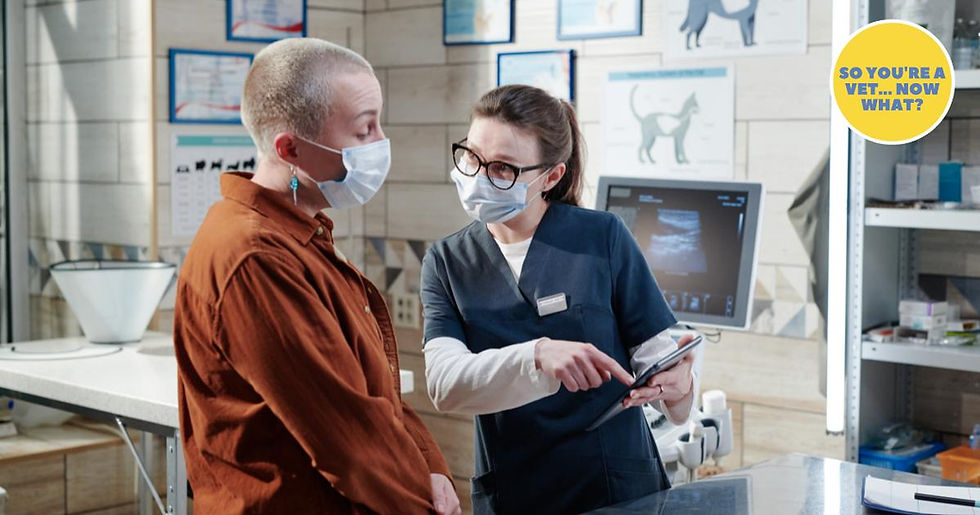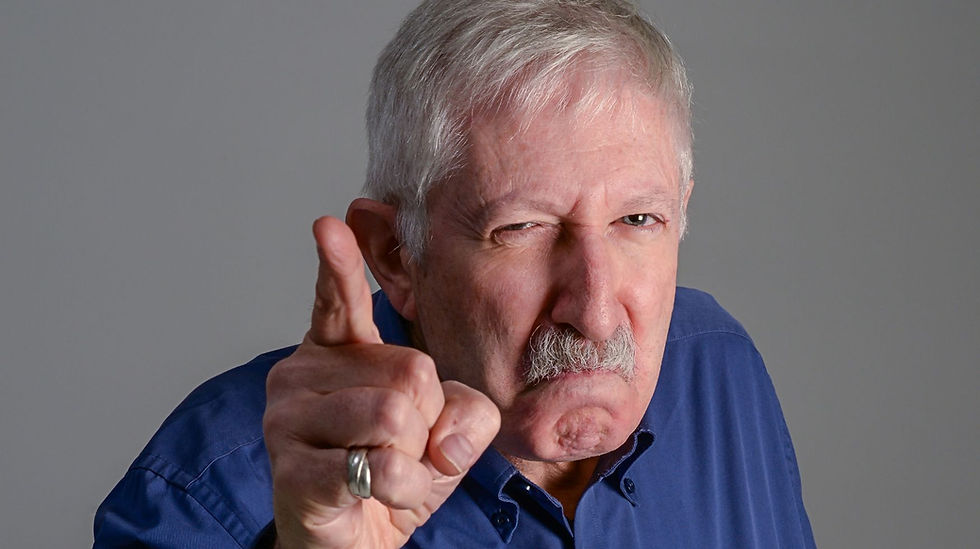How to Talk to Pet Owners About Money
- Dr Dave Nicol
- Nov 6, 2023
- 4 min read

Over the last few years, there has been a lot of controversy surrounding the cost of veterinary care.
In the US, for instance, the cost of routine and surgical visits has risen by 47%-73% over the last decade. In the UK, fees have similarly risen¹.
And while these rises are partially due to price hikes, they mainly come down to demand and care quality differences². However, many pet owners don’t realize this, which can cause a lot of tension when it comes to discussing veterinary costs.
In this article, we talk about how to talk about money with your clients effectively, without feeling awkward (or guilty!).
What Are Some of the Problems Vets Experience When Talking to Clients About Fees?
‘One of the biggest problems veterinarians face when talking to clients about fees relates to our own feelings of guilt,’ says Dr. Lauren Smith, a veterinarian and communication coach from Long Island, New York.
‘It’s one of the reasons why I think people in our profession get so upset when clients make harsh comments about how expensive medicine is. We feel that our services are necessary. But at the same time, we have to deny people those services because of their finances, and this contributes to this greater feeling of guilt’.
Many vets can also feel nervous talking to clients about fees due to the volatile combination of both money and pets. Often, conflicts around cost can arise when pet owners are already upset or frustrated over a difficult medical situation, and this frustration can get directed toward clinicians.
‘Most veterinarians tend to be conflict-avoidant. A lot of us are more animal people than people people, so we want people to like us and not argue.’ says Lauren. This, in tandem, can create a sense of anxiety and trepidation around such conversations.
How to Approach the ‘Money’ Conversations With Clients...
1. Approach the Conversation With a Good Mindset
If you’re approaching a potentially tricky conversation with a client about money, and you’re not in a good headspace, that’s not a good start.
Not only does it reduce the chance of success, but it may cause conflict if the client picks up on your attitude.
2. Withhold Judgement
It can be easy to draw conclusions about clients when they don’t want to pay for necessary veterinary services.
‘Because we do these things day in and day out, a course of action that seems obvious to us may not to a client’ says Lauren.
‘And I do think that leads to some judgment on our part that is not warranted’.
Because most vets join this profession to help animals, when they see a situation whereby the animal’s best interests aren’t being met, this can cause tension.
‘Different people have different values, so if someone doesn’t want to spend a ton of money on getting liver biopsies on their dog with elevated liver enzymes, as clinicians it’s not our place to comment on that’.
So unless the well-being of the animal is seriously compromised, getting hung up on a client’s morals is not going to help you work together towards an optimum outcome.
3. Figure Out What the Issue With the Client is
‘If you give the client an estimate and they have a negative reaction, is this because they legitimately can’t afford it, or because they don’t see the value of it? If it is the second one, there is room to educate them more about why these services are important’ says Lauren.
‘But if they don’t have enough money, there’s no amount of talking you can do to muster up funds they don’t have’.
Identifying the root cause of the resistance, therefore, can help clinicians approach money conversations with a level of sensitivity needed to garner a positive outcome.
4. Give the Client Options (But Not All at the Same Time)
Once you’ve discovered what the underlying issue is, then you can work towards a solution.
A good solution is one where everyone is happy and you can help the animal with the resources you have. But what do you do if the client outright rejects or gets angry over your treatment costs?
Lauren suggests having some de-escalation strategies in your toolbox in case.
‘One of the best ways to de-escalate a situation is to let the client vent. A lot of the time they just need to get it off their chest- as long as they are not crossing lines and making threats or personal attacks.’
She suggests identifying the clients’ emotions to help them get out of reacting mode and into a reflective mode. Statements such as: ‘I can see you frustrated’ or ‘I can see that you’re upset’ etc, can help.
Once you’ve navigated this part of the conversation, you can get down to what matters most to the client and what their budget is. By doing so, you can offer the next best solution.
‘Gold standard care’, as turns out, is not what you learned at college. In the real world, it’s the best option available to meet the circumstances and needs of the pet and the family paying the bill.
Be an Advocate, Not an Apologist
Although 99% of the time, some patience and understanding can go a long way, there will always be situations where no matter how much you try, the client isn’t going to be happy. And that’s ok, because you can’t please everyone! Sometimes you just have to let things go.
You know that the services you are providing are valuable and that stereotypes about vets and their fees are based on a fallacy, not reality. So hold your head high and be an advocate for your services, not an apologist for your prices.
Check out the 'So You're a Vet, Now What?', book to help build or maintain a successful and happy career in veterinary medicine:
References
1 - ‘Why does treatment for pets cost so much? – BBC News.’ 11 Feb. 2016, https://www.bbc.co.uk/news/magazine-35524322. Accessed 13 Dec. 2021.
2 - ‘Why do vets’ prices keep getting higher and higher? – Vet Help Direct.’ 9 Jan. 2021, https://vethelpdirect.com/vetblog/2021/01/09/why-do-vets-prices-keep-getting-higher-and-higher/. Accessed 10 Jan. 2022.











